The Artic Culture Area includes the Aleutian Islands, most of the Alaska Coast, the Canadian Artic, and parts of Greenland. It is an area which can be described as a “cold” desert. Geographer W. Gillies Ross, in his chapter in North American Exploration. Volume 3: A Continent Comprehended, writes:
“The North American Arctic is usually considered to be the region beyond the northernmost limit of tree growth.”
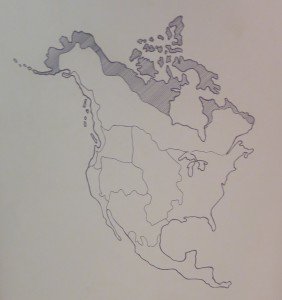
The shaded area on the map shown above shows the Arctic culture area.
The area has long, cold winters and short summers. During the summer, the tundra becomes boggy and difficult to cross. W. Gillies Ross describes the region this way:
“In general, the Arctic is characterized by mean monthly temperatures under 50ᵒ F (10ᵒ C); long, severe winters; short, cool summers; persistent ice cover on fresh- and saltwater bodies; prolonged winter darkness and summer daylight; ground underlain by continuous permafrost; and a comparatively small number of plant and animal species.”
The native people of the Artic are usually divided into the Aleut and the Eskimo. The Eskimo refer to themselves as Inuit and the Aleut call them themselves Unangan. All of the languages of this area are classified as Eskimoan.
The Maryhill Museum of Art near Goldendale, Washington, has a collection of Arctic artifacts on display.
According to the Museum display:
“Much Eskimo art was created in ivory and as a result it was small in scale. Arctic life, both human and animal, was the most common subject matter in art. Although wood was scarce, wooden masks and containers had an important place in Eskimo art. Among the Aleut, basketry was a major art form.”

Shown above are some examples of Eskimo incised walrus tusk.
According to the Museum display:
“Eskimo carvers began to make incised walrus tusks for sale to tourists after seeing Euro-American scrimshaw. The three panels on this tusk show a man hunting seals on the left and two scenes of wolves hunting and killing caribou to the right.”
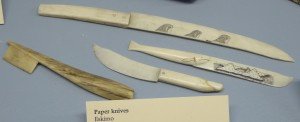
Another example of Eskimo art made for tourists is seen in the paper knives shown above.
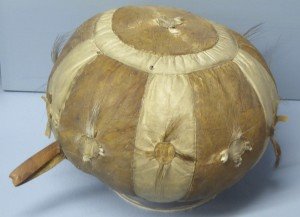
Shown above is an Eskimo ball made from seal skin.
Containers
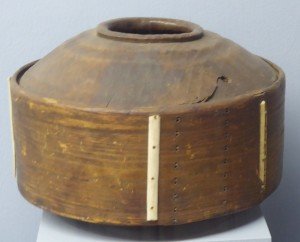
Shown above is an Eskimo woman’s work box.
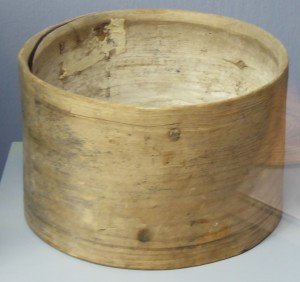
Shown above is an Eskimo bent-wood bowl.
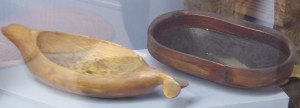
Eskimo child’s dishes are shown above.
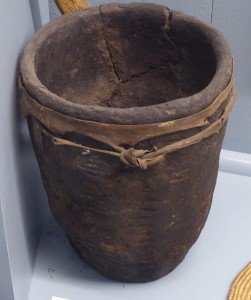
While the Eskimo are not known for making pottery, they did make some simple pots.
Fishing Equipment
Fishing was an important subsistence activity for many groups.
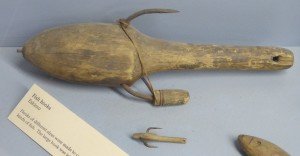
Fishhooks are shown above. The large hook was used for catching cod.
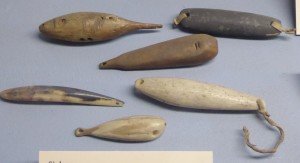
A collection of sinkers is shown above.

Shown above are net shuttles which are used in making fishing nets.
Hunting Equipment
Along the coast, the peoples of the Arctic hunted sea mammals, including sea lions, sea otters, seals, and whales. The use of spear throwers enabled hunters to throw spears and harpoons more powerfully and more accurately.
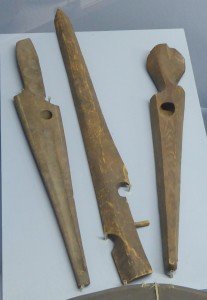
Spear throwers are shown above.
According to the Museum display:
“The projectile was laid along the groove with its base against the small ivory hook. The finger hole and grooves on the reverse side were made to fit the individual hunter’s hand.”
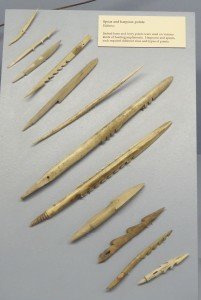
Shown above are some spear and harpoon points.
Other tools
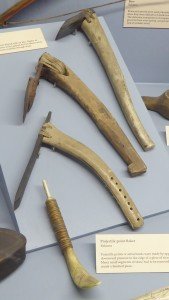
Shown above are three adzes used in woodworking and a projectile point flaker.
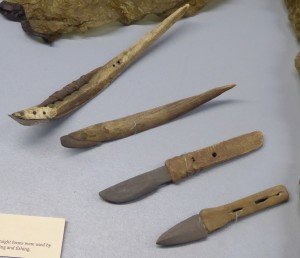
Shown above are some Eskimo knives.
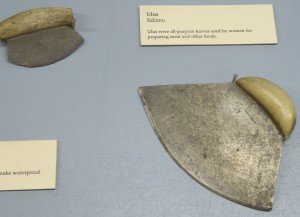
Shown above are some Ulus, the all-purpose knives used by Eskimo women.
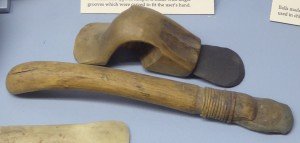
Shown above are some skin scrapers which were used in skinning animals and preparing the hides for tanning.
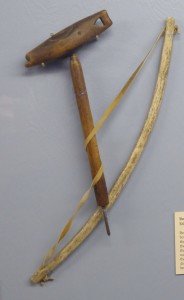
Shown above is an Eskimo bow drill.
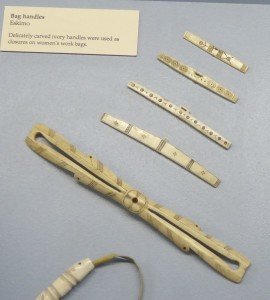
Shown above are some Eskimo bag handles.
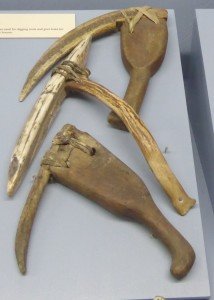
Shown above are some Eskimo picks.
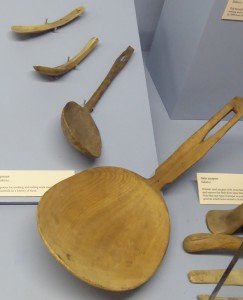
Shown above are some Eskimo spoons.
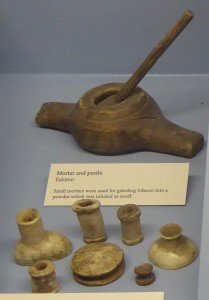
Shown above is a mortar and pestles used for grinding tobacco into a powder which was inhaled as snuff. The small items below the mortar and pestle are nozzles and stopper. Pouches would be made from seal skins which could be used for floats in fishing as well as for storing seal oil and other commodities.
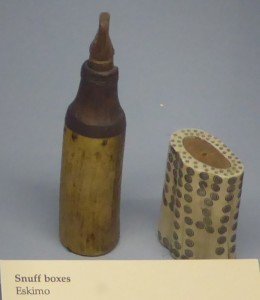
Shown above are some snuff boxes.
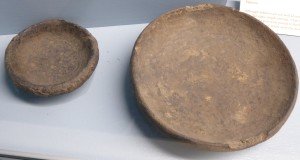
Shown above are some Eskimo lamps.
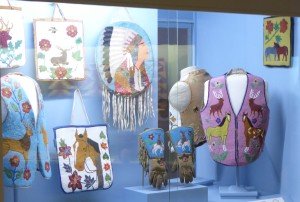
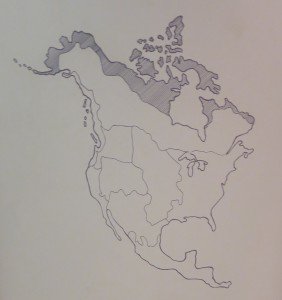
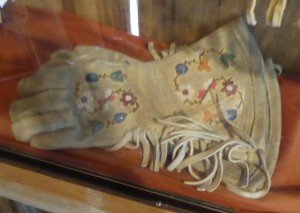
Leave a Reply